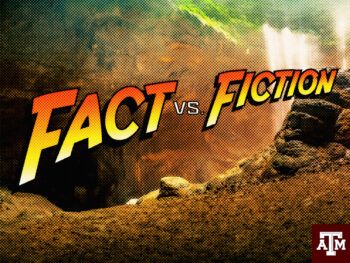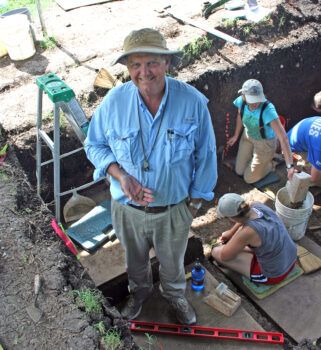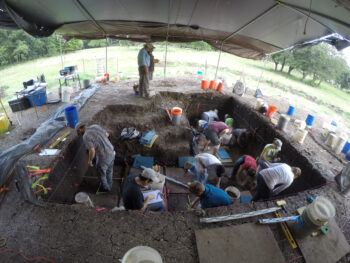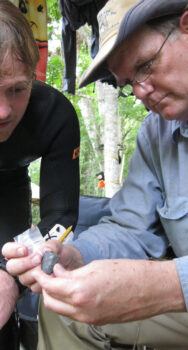Indiana Jones And Archaeology: Fact Vs. Fiction


In anticipation of the latest installment of the Indiana Jones movie series “Indiana Jones and the Dial of Destiny” opening this weekend, real-life archaeologist Dr. Michael Waters agreed to help fans distinguish between fictional elements that make the movies entertaining and real-world facts that define the discipline of archaeology.
Waters, a distinguished professor in the Texas A&M University Department of Anthropology and director of the Center for the Study of the First Americans (CSFA), is a self-proclaimed Indiana Jones aficionado. He’s quick to share his enthusiasm for the franchise, confessing to having watched all the movies, his favorite being the series’ first installment, “Raiders of the Lost Ark.”
Although he can’t help but admire the thrilling combination of archaeology and adventure, Waters is quick to correct the Hollywood illusion, noting that real-life archaeology is far from the heart-pounding expeditions depicted on the silver screen.
Less Excitement, More Patience
“In truth, archaeology involves meticulous and patient work, carefully sifting through sediment in often challenging conditions,” Waters said. “Weather conditions can range from scorching heat to bone-chilling temperatures.”
Waters, a CSFA Endowed Chair at Texas A&M, recalls a student who expected Indiana Jones-like adventures but quickly learned the harsh reality.
“Archaeology is hard work,” Waters said. “You won’t find cool artifacts lying around like in the movies.”
Actual archaeologists may not carry bullwhips in their toolkit, but practical tools like shovels, trowels and brushes aid those in the field looking to meticulously uncover artifacts as they were left by ancient civilizations.

A Different Focus In Real Life
In the Indiana Jones sagas, one recurring theme is the search for religious and mythical artifacts — a difference Waters highlights between the big screen and real-life archeologists.

“Our primary goal is to discover and understand the tools and artifacts left behind by prehistoric civilizations,” Waters explains. “In real life, archaeology is a quest to unravel the stories of our ancestors and shed light on their lives, adaptations and the environments they lived in. The excitement lies in finding stone tools untouched for thousands or even tens of thousands of years.”
While friendly rivalries and differences of opinion are not uncommon in archaeology, Waters emphasizes that real-life conflicts never involve high-speed chases or death-defying stunts. The field embraces healthy debate and discussions in which experts strive to understand and interpret archaeological findings to the best of their abilities.
Far More Time Consuming
In the films, Indiana Jones is frequently portrayed as recovering valuable artifacts and delivering them to museums. In real-life archaeology, Waters says the post-discovery journey of artifacts involves a series of multifaceted and time-consuming steps.
Following excavations, artifacts undergo a meticulous process of cleansing, categorizing and recording prior to painstakingly thorough examination and analysis. Eventually, these treasures find their place in archives and repositories, where they are stored for future research or displayed for public appreciation.
Waters believes the action-packed adventures of Indiana Jones serve their purpose: to entertain and spark curiosity. While acknowledging the stark contrast with real-life archaeology, he hopes that viewers will be inspired to explore more about ancient cultures and archaeological research beyond the movies.
For those who prefer movies as their learning method of choice, he recommends “The Dig” as a more realistic portrayal of archaeology and example that offers a deeper understanding of the field.
Although the films may take liberties with the realities of archaeology, they do provide a gateway to learning about ancient civilizations, artifacts and historical events. As Waters explains, separating fact from fiction allows movie-goers to appreciate the entertainment value of Dr. Jones and his fedora fashion and cracking whips while also embracing the underlying importance of archaeology and being driven by discovery.
Media contact: Grant Hawkins, ghawkins@tamu.edu





